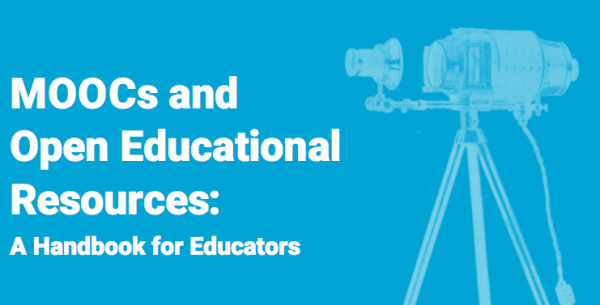For nearly as many years as he’s occupied the public eye, famed linguist and anarchist philosopher Noam Chomsky has made claims that might have discredited other academics. Perhaps his many books, articles, lectures, interviews, etc. carry such weight because of his “famed linguist” status and his longtime tenure at MIT. But there’s more to his longevity as a respected critic of U.S. state power. His voice also carries significant authority because he substantiates his arguments with erudite, granular analyses of economic theory, history, and political philosophy.
We’ve seen him do exactly this in his fierce opposition to the Vietnam War at the beginning of his activist career, and in his critiques of proxy wars, imperialistic repression, and corporate resource grabs in Latin America and Southeast Asia in decades since.
When it comes to the U.S. domestic scene, one of Chomsky’s most pointed and continually relevant critiques addresses the way in which we’re led to believe the country’s actions overseas justify themselves, as well as its actions upon its own citizens. We might debate whether the U.S. is a democracy or a republic, but according to Chomsky, both notions may well be illusory.
Instead, Chomsky argues in Manufacturing Consent—his 1988 critique of “the political economy of the mass media” with Edward S. Herman—that the mass media sells us the idea that we have political agency. Their “primary function… in the United States is to mobilize support for the special interests that dominate the government and the private sector.” Those interests may have changed or evolved quite a bit since 1988, but the mechanisms of what Chomsky and Herman identify as “effective and powerful ideological institutions that carry out a system-supportive propaganda function” might work in the age of Twitter just as they did in one dominated by network and cable news.
Those mechanisms largely divide into what the authors called the “Five Filters.” The video at the top of the post, produced by Marcela Pizarro and narrated by Democracy Now’s Amy Goodman, provides a quick introduction to them, in a jarring animated sequence that’s part Monty Python, part Residents video. See the five filters listed below in brief, with excerpts from Goodman’s commentary:
1. Media Ownership—The endgame of all mass media orgs is profit. “It is in their interest to push for whatever guarantees that profit.”
2. Advertising—Media costs more than consumers will pay: Advertisers fill the gap. What do advertisers pay for? Access to audiences. “It isn’t just that the media is selling you a product. They’re also selling advertisers a product: you.”
3. Media Elite—“Journalism cannot be a check on power, because the very system encourages complicity. Governments, corporations, and big institutions know how to influence the media. They feed it scoops and interviews with supposed experts. They make themselves crucial to the process of journalism. If you want to challenge power, you’ll be pushed to the margins…. You won’t be getting in. You’ll have lost your access.”
4. Flack—“When the story is inconvenient for the powers that be, you’ll see the flack machine in action: discrediting sources, trashing stories, and diverting the conversation.”
5. The Common Enemy—“To manufacture consent, you need an enemy, a target: Communism, terrorists, immigrants… a boogeyman to fear helps corral public opinion.”
Chomsky and Herman’s book offers a surgical analysis of the ways corporate mass media “manufactures consent” for a status quo the majority of people do not actually want. Yet for all of the recent agonizing over mass media failure and complicity, we don’t often hear references to Manufacturing Consent these days. This may have something to do with the book’s dated examples, or it may testify to Chomsky’s marginalization in mainstream political discourse, though he would be the first to note that his voice has not been suppressed.
It may also be the case that media theory and criticism like Chomsky’s, or the work of Marshall McLuhan, Theodor Adorno, or Jean Baudrillard (all very different kinds of thinkers), has fallen out of favor in a 140-character world. In the late-80s and 90s, however, such theory received a good deal of attention, and Chomsky appeared in the many venues you’ll see in the short video above, excerpted from an almost 3‑hour 1992 documentary called Manufacturing Consent, a film made by “die-hard fans,” wrote Colin Marshall in an earlier post, that “curates instances of Chomsky going from interview to interview, debate to debate, forum to forum, making sharp-sounding points about the relationship between business elites and the media.”
Our desire for instant reward and settled opinion may have overtaken our ability to subject the entire phenomenon of mass media to critical analysis, as we leap from cliffhanger to cliffhanger and crisis to crisis. But should we take the time to watch this film and, preferably also, read Chomsky’s book, we may find ourselves somewhat better equipped to evaluate the onslaught of propaganda to which we’re subjected on what seems like an hourly basis.
Related Content:
Noam Chomsky Defines What It Means to Be a Truly Educated Person
Noam Chomsky & Michel Foucault Debate Human Nature & Power (1971)
Noam Chomsky Talks About How Kids Acquire Language & Ideas in an Animated Video by Michel Gondry
Josh Jones is a writer and musician based in Durham, NC. Follow him at @jdmagness




